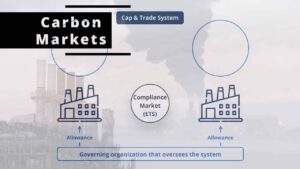Carbon Credit
Carbon credit which one is a tradable permit or certificate that allows the holder to emit a specific amount of greenhouse gases (GHGs). It was designed as part of the system known as a cap-and-trade program, where companies that pollute are awarded credits that allow them to continue to pollute up to a set limit, which is reduced over time. Any excess allowances can then be sold to another company that needs them.
It’s a good idea to learn about the different types of carbon credits so you can choose the right ones for your business. These include carbon.credit from a carbon project that aims to meet a United Nations (UN) Sustainable Development Goal, and those that are designed to offset emissions.

The quality of the carbon credit that you purchase depends on several factors, including its additionality, permanence and certification. For example, if you want to buy a carbon credit that helps to protect coral reefs and the wetlands that sustain them, it’s important to make sure that it has a high level of additionality. This means that the underlying project will deliver significant reductions in GHG emissions and a high level of environmental protection while also delivering economic benefit.
Carbon Credit Which One Is Right For Your Business?
Additionality is a key consideration for any type of offset. It’s a metric that measures how much of the emissions reduction is independent and measurable. It’s especially important to pay attention to this metric if you’re looking to buy carbon credits to help offset emissions.
This metric can be difficult to understand for people who haven’t been exposed to it before. This is because it requires a basic understanding of what the emissions that you produce are. There are many factors that can contribute to the total amount of GHGs you produce, such as the way your energy is generated and how much your products or services cost.
These factors are all calculated and multiplied to give you the total number of metric tons of CO2 emissions that you produce. This information is then used to calculate the number of carbon credits that you need to buy in order to compensate for the emissions that your business produces.
You can find more information about carbon credits and the different types of carbon projects by visiting a carbon project’s website, or by contacting an accredited carbon credit broker. The broker can then match you with a project that matches your goals and objectives, and will ensure that the credits are delivered by the time they’re needed.
They’re a vital tool to help you comply with your carbon footprint and climate change regulations, and can be the difference between a company that meets their target or falls short. They’re also a valuable tool for businesses that have already reached their carbon footprint targets and are looking to offset the remaining emissions they haven’t met.
It’s a growing market and is worth investing in for any company that wants to minimize their impact on the planet. The demand for carbon credits is expected to skyrocket in the coming years as companies look for ways to meet new mandatory emissions trading schemes and public pressure grows to address global warming.